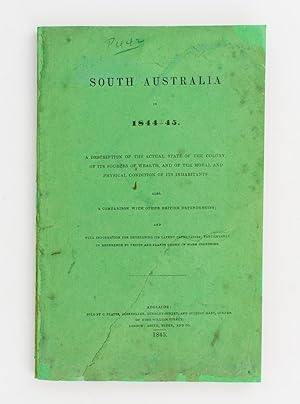rundle (8 Ergebnisse)
Produktart
- Alle Produktarten
- Bücher (5)
- Magazine & Zeitschriften
- Comics
- Noten
- Kunst, Grafik & Poster
- Fotografien (3)
- Karten
-
Manuskripte &
Papierantiquitäten
Zustand
- Alle
- Neu
- Antiquarisch/Gebraucht
Einband
Weitere Eigenschaften
- Erstausgabe (1)
- Signiert
- Schutzumschlag
- Angebotsfoto (7)
Gratisversand
Land des Verkäufers
Verkäuferbewertung
-
Never Again
Verlag: Rundle
ISBN 10: 0957310102ISBN 13: 9780957310100
Anbieter: WeBuyBooks, Rossendale, LANCS, Vereinigtes Königreich
Buch
Zustand: Good. Most items will be dispatched the same or the next working day. A few small marks to page edges.
-
Never Again
Verlag: Rundle 01/p /01 S
ISBN 10: 0957310102ISBN 13: 9780957310100
Anbieter: AwesomeBooks, Wallingford, Vereinigtes Königreich
Buch
Zustand: Very Good. This book is in very good condition and will be shipped within 24 hours of ordering. The cover may have some limited signs of wear but the pages are clean, intact and the spine remains undamaged. This book has clearly been well maintained and looked after thus far. Money back guarantee if you are not satisfied. See all our books here, order more than 1 book and get discounted shipping. .
-
The Houses of Parliament. An abbreviated volume comprising reproductions of original photographs, old prints and short descriptive matter. Compiled and published by W. J. Rand.
Verlag: London: F. L. Rundle, 2. Auflage, 1947., 1947
Anbieter: Antiquariat Carl Wegner, Berlin, B, Deutschland
Verbandsmitglied: GIAQ
Hardcover. 23,5 x 17,5 cm. Original cloth, slightly rubbed. Former library possession with stamps and signatures. 64 pages with numerous photographs in black and white. Some notes with ink on the fly leaf and page 6. Title page and pages 1 -2 are stained. All in all quite good condition. --- Blauer Originalleinenband. Einband am Rücken etwas beschabt. Ausgeschiedenes Bibliotheks-Exemplar mit Stempeln und Signaturen. 64 Seiten mit zahlreichen Schwarz-Weiß-Fotos. Vorsatz-Rückseite mit Tintennotizen und Fleck und Seite 1/2 und Titelblatt gelbfleckig, auf Seiten 6 handschriftlicher Eintrag mit Tinte von 1950. Insgesamt noch gut erhalten. -- Bitte Portokosten außerhalb EU erfragen! / Please ask for postage costs outside EU! / S ' il vous plait demander des frais de port en dehors de l ' UE! -- Genießen Sie den Sommer und bestellen Sie ein Buch bei uns! K13450-228678.
-
A South Australian cabinet card photograph of a man in military uniform holding a bugle
Verlag: Fruhling Studio, 62 Rundle Street, Adelaide, 1890
Anbieter: Michael Treloar Booksellers ANZAAB/ILAB, Adelaide, SA, Australien
Fotografie
Adelaide, Fruhling Studio, 62 Rundle Street, [mid- to late-1890s]. A vintage gelatin silver photograph (134 × 94 mm), mounted on the original cabinet card (165 × 110 mm), with the photographer's details blindstamped in the bottom margin. Both the photograph and mount are in excellent condition. Contemporary business directories indicate that Fruhling Studio commenced operating from 62 Rundle Street in 1895 ('Portrait and Enlarging Co., Fruhling & Co.'); this 'continued until 1913, when the address was changed to 62A Rundle Street. From 1918 to 1927 the address was given as 103A Rundle Street. Although listed as Fruhling & Co. in directories, the name Fruhling Studios [sic] was usually printed on their photographs' (Photohistory SA website). The particulars of the uniform elude us, but the following information about the parlous state of military affairs in colonial SA at the time this photograph was taken, provides some context. These comments come from an unpublished manuscript by Geoffrey H. Manning ('The Russians are Coming - The Defence of Colonial South Australia'), now in the State Library of SA. 'By May of 1896 it was finally recognised that the basis upon which the military forces of the Australian colonies were organised was unsatisfactory and it was to cure defects and place matters on a more effective footing that a Consolidating and Amending Act had been passed in the previous session. In the dying days of Parliament its progress through all stages was pushed on and the headlong speed, with which it was carried through the two chambers, necessarily militated against the critical examination of its many clauses.The fact that the majority of the sections were merely repetitions of those in existing Acts was obviously no justification for dealing with the Bill in such a spasmodic manner. After the Act was assented to more than four months were allowed to pass without anything being done to bring the members of the old force together, with a view to acquainting them with the conditions under which they were to be asked to enroll and this policy of procrastination was observed to the last. Enrolment commenced in August but in the face of the many other allurements held out to the youth of South Australia in the form of cricket, football, baseball, lacrosse, and - most attractive of all - cycling, it was not to be wondered that the process of recruiting was painfully slow; by mid-February 1897 there had been 611 enrollments. With this change came the end of the colourful uniforms that marked the early military history of the colony. The scarlet tunics, white-striped blue trousers and white helmets that had followed the grey uniform of the 1880s - the "Destitutes" they called the men in these uniforms - were replaced by khaki with maroon facings and a felt hat. The first parade of the new military forces took place on 3 October 1896 when "The South Australian Army" presented a rather nondescript appearance owing to the fact of so many recruits being in the ranks and yet unprovided with uniforms, and also a proportion of men in the old force whose uniforms were worn out and too shabby for wear. The public manifested little interest in the proceedings - it was race-day - and, moreover, the band was not expressively in evidence. A few people, probably the mothers and fathers, the sisters and the aunts of the new recruits, attended'.
-
A vintage photograph of the 'Maylands Football Team 1891' in suburban Adelaide
Verlag: S. Solomon, 51 Rundle St, Adelaide, 1891
Anbieter: Michael Treloar Booksellers ANZAAB/ILAB, Adelaide, SA, Australien
Fotografie
Zustand: Very Good. Adelaide, S. Solomon, 51 Rundle St. 1891. An albumen paper hand-coloured photograph (317 × 425 mm, with a wide border arched at the top), on the original captioned mount (external dimensions approximately 420 × 560 mm, with the photographer's credit inkstamped on the verso), recently matted (visible image size 395 × 457 mm), ready for framing (or long-term storage in its custom-made Mylar sleeve). The photograph has hand-coloured stripes on the guernseys, socks and ties (presumably originally red, white and blue, but the red has now an orange-brown tone); the bottom right-hand corner is a little marked (but confined mainly to the margins); the visible portion of the original mount has a few marks and minor blemishes; overall, in very good condition. The South Australian 'Register' (Monday, 20 April 1891) contains an interesting article on a recent match between Norwood and Maylands, adjoining suburbs in Adelaide. 'On Saturday afternoon an opening match was played on the Adelaide Oval. It was a preliminary game arranged for the purpose of getting the senior members in trim for the Association matches, which will most probably start next Saturday week. The weather was all that a footballer could desire. Owing to the races and the fact that the game was regarded as a certainty for the Norwoods, it was not surprising that such a few people put in an appearance. The game was advertised to start at 2.45, but it was 3.30 before the clubs got their respective teams together. After taking on substitutes it was found that both clubs would have to play short handed. The game was a series of scrimmages owing to the men leaving their places. The Norwoods proved far superior to their opponents, and romped home easy winners . The Maylands have several men who with training and experience will develop into first-class players'. Conspicuous in the front row of this studio group portrait, posed intriguing on dry grass with small eucalypt branches in the foreground and a bucolic painted backdrop, is a young Indigenous member of the team.
-
A vintage photograph of the 'South Adelaide Football Club. First Twenty. 1879'
Verlag: Melbourne Photo. Co., 16, 18 and 20, Rundle Street, Adelaide, 1879
Anbieter: Michael Treloar Booksellers ANZAAB/ILAB, Adelaide, SA, Australien
Fotografie
Adelaide, Melbourne Photo. Co., 16, 18 and 20, Rundle Street, 1879. An albumen paper photograph (209 × 258 mm), on the original mount (external dimensions 406 × 440 mm), ruled and captioned in gilt, recently matted (visible image size 320 × 355 mm), ready for framing (or long-term storage in its custom-made Mylar sleeve). The photograph has two minor blemishes dating back to its production (some touching-up to the top left-hand corner, and a short closed tear to the bottom edge, clearly present when it was mounted); slight silverfish nibbling to the edges; the mount has a few light waterstains visible (most of them are masked by the new mat); overall a very presentable example of a very rare group portrait. Those featured in the photograph are (left to right, top to bottom) are G.F. Sharpe, T. Reid, C. Kerr, R. Absalom, S.A. Wallace (captain), A. Mehrtens (vice-captain), Jno. Donnell, C. Coley, J. Douglas, C.C. Kingston (Association delegate); F. Mehrtens, H. Griggs, D. Green, W. Kemp, D. Young, J. Couche, W. Shaw, W. Green; A.W. Jones, M.J. Considine, B. Mehrtens, G. Wood, W. Dixon, and R. Coonan. In ink on the verso is the name 'Considine' (cropped of its initial letter); doubtless, this photograph originally belonged to Martin Considine, a member of the team. By extraordinary coincidence, some 42 years after this portrait was taken, a lengthy article about it appeared in a local newspaper, 'The Mail' (Adelaide, Saturday, 24 September 1921): 'Only one club is South's senior. Port was first to see the light in 1870, and is therefore six years older than the southerners. Both Port and South were in existence prior to the advent of the association, in days even before Norwood came on the scene. In those times the meeting of the pioneer teams meant a clash in a very real sense because a game between the old warriors would be considered game indeed if it didn't end with a fight or two. Ancient followers of the pastime will proudly tell you that those were the days when men knew how to play football! The articles appearing in these columns on football of other days have created a wide interest, even some of the South Australian veterans now residing outside the State having expressed their appreciation of the revival of those cherished memories. A portrait of the South Adelaide Football Club of 1879 brought to the "Mail" Office by Mr Bowden, of Gouger Street, has almost a priceless value to-day. What a group it is! Sam Wallace was skipper and Iney Mehrtens vice-captain, and at each end of the picture stands a bearded figure - the first that of George Sharp (secretary of the club in the early seventies) and the other that of the late Charles Cameron Kingston (then Association delegate). Mr Sharp is among the few surviving members of the old team. In his seventy first year, he is still at work as record keeper at the Local Court. Prior to entering the service he was for 24 years accountant in the legal office of Mr Kingston. So he ought to be a man worth interviewing. Sam Wallace, he said, "was one of the best followers in the Carlton Club before he came to Adelaide and captained South. The brothers Mehrtens - Benno, Iney, and Figo - were also splendid men. Bill Kemp was one of the best place-kicks in his time. In fact, I don't think anyone could beat him now. Other great players were Dave and Bill Green, Charley Kerr, Jack Donnell, the late schoolmaster, Toby Jones, a champion mile winner and one of the fastest players in the State, Dave Young, who followed me as secretary, Guinea Dixon, who afterwards played for Norwood, Bob Absalom, a Victorian importation who was a magnificent footballer, Ted Colby, one of the old originals and an interstate man, Jack Couche, a strong footballer who could play anywhere, Martin Considine, a big follower of about 15st., and Dick Coonan, who later went to Norwood"' (AustralianFootball website). The South Adelaide Football Club website adds a few more interesting facts, not least about Charles Cameron Kingston (1850-1908): 'From its very beginning, it wore blue and white, colours which it has carried right through the 140 years of its history to the present day. South Adelaide was credited with the premiership of the newly formed South Australian Football Association in its first year of operation in 1877, and then won another six premierships (and finished runner-up seven times) in the next twenty years. Characters from those early years included its first secretary, Charles Cameron Kingston (pictured above top-right wearing his trademark top hat). Kingston played for the club during its first two seasons. He then took on the role as the club's first secretary, a position he held until 1879. He was also President of the club for 28 consecutive years until 1904, during which time he was also Premier and Attorney-General of South Australia, a member of the committee responsible for drafting the constitution for the Commonwealth of Australia, and Minister of Trade in the very first Federal Government'.
-
The Rock Tombs of El-Hawawish: The Cemetery of Akhmin, I-VII. [SEVEN VOLUMES].
Verlag: Sydney, Macquarie Ancient History Association; Rundle Foundation for Egyptian Archaeology, 1980-87., 1980
Anbieter: Librarium of The Hague, The Hague, Niederlande
Buch
Soft cover. Zustand: . Seven volumes. Quarto. Various paginations. Each volume with a suite of plates bound at end, many folding, some in colour, multiple images to each. Original printed wrappers. In a very good condition. ~ First edition. First seven volumes of the series. _O-4.
-
South Australia in 1844-45. A Description of the Actual State of the Colony, of its Sources of Wealth, and of the Moral and Physical Condition of its Inhabitants. Also, a Comparison with other British Dependencies; and Full Information for developing its Latent Capabilities, particularly in Reference to Fruits and Plants grown in Warm Countries
Verlag: Andrew Murray, Printer, Rundle Street (Sold by C. Platts, Bookseller, Hindley Street .), Adelaide, 1845
Anbieter: Michael Treloar Booksellers ANZAAB/ILAB, Adelaide, SA, Australien
Erstausgabe
Paperback. First Edition. Adelaide, Andrew Murray, Printer, Rundle Street (Sold by C. Platts, Bookseller, Hindley Street .), 1845. Octavo, xii (last blank), 106 pages plus a folding etching, but lacking the folding frontispiece map noted by Ferguson. Original bright green wrappers with the full title page details repeated on the front cover (with the date of publication now added); wrappers a little marked, but expertly conserved (the front cover is now lined on the verso, stabilizing a long tear, and filling in some minor loss to the edges); title page a little marked; occasional chips and dog-ear creases to the uncut edges; trifling signs of age and use, but essentially a very agreeable copy. The State Library of South Australia has a copy of this item with the map (and it's a beauty - a hand-coloured lithograph, 322 × 213 mm, produced in 'Goodwood nr Adelaide' in 1845). However, reading between the lines, a case may be made for stating that not all copies were issued with the map. Its absence here notwithstanding, this is by any account a very rare publication, and worthy of serious consideration on at least two counts. The folding plate is an etching (paper size approximately 220 × 280 mm) of 'Ridley's Reaping Machine. S. Australia', signed and dated in the plate 'NRF 1845'. The artist is Frederick Robert Nixon (circa 1817-1860), who arrived in Adelaide in May 1838 to take up a position as assistant surveyor. In 1845, he published 'Twelve Views in Adelaide and its Vicinity, South Australia. Drawn, etched, and printed by F.R. Nixon'; it was the earliest South Australian plate book. He was a self-taught artist who 'had to manufacture all his machinery for preparing and pressing his etchings . [they] are superior as works of art, and accurately as well as pleasingly depict the scenes which they represent ('The South Australian', 21 February 1845). Nixon left Adelaide in May 1846, bound for Mauritius, where he died in 1860. Kerr's 'The Dictionary of Australian Artists' (1992) records that the Ridley etching was the only other one he is known to have produced. There is a lengthy chapter (10 pages) on the Aboriginal inhabitants, and the chapter on horticulture contains seven pages on vines and wine-making, with the information credited to M. Vaillant (see page 58). Ferguson 4014.


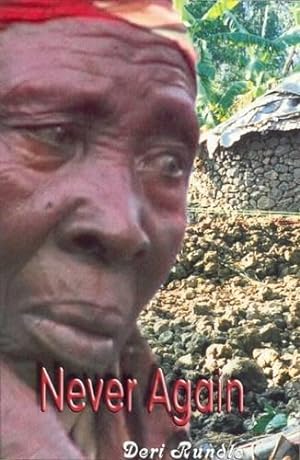
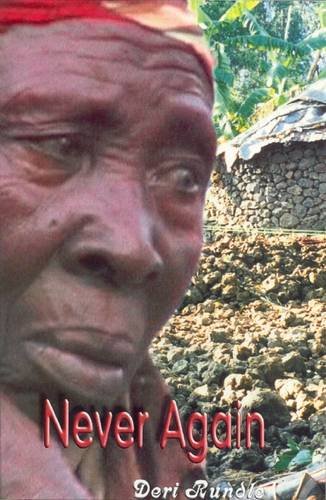
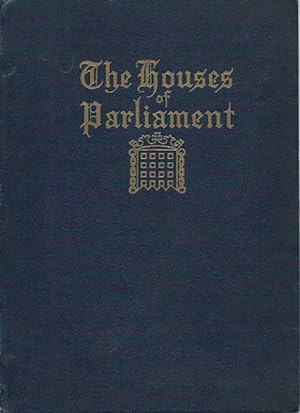
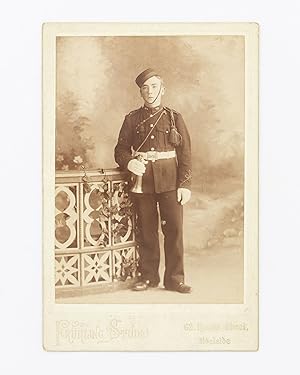
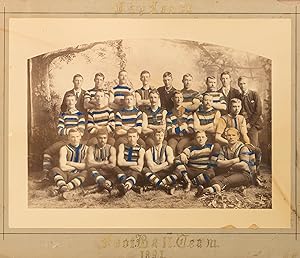
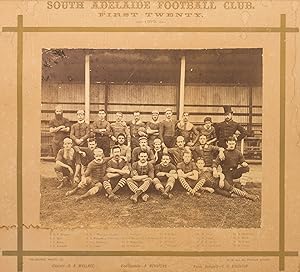
![Bild des Verkäufers für The Rock Tombs of El-Hawawish: The Cemetery of Akhmin, I-VII. [SEVEN VOLUMES]. zum Verkauf von Librarium of The Hague](https://pictures.abebooks.com/inventory/md/md31217596345.jpg)
